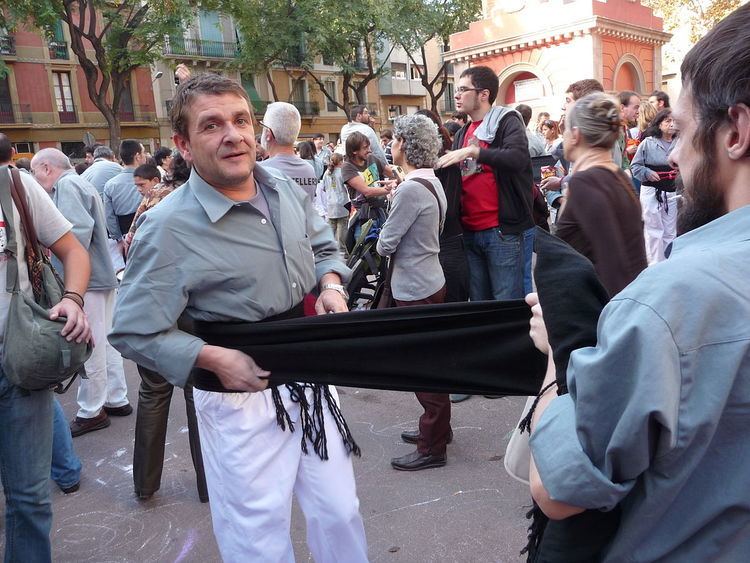 | ||
The faja is a traditional Spanish clothing accessory. It is made of a long piece of cloth, similar to a sash. It is worn around the waist and wraps around several times. During the 19th century, the farmers and artisans wore it to warm up the kidneys and to protect the lumbar area during the work in the fields. The bourgeois used to wear it as a sign of power, with different colours and 3 meters long. Nowadays, it is present in many traditional dances and festivals. This garment was common in Catalan and Occitan.
Catalonian traditional uses
In Catalonia (Spanish region) they use the "faixa" for their traditional dances and spectacles:
References
Faixa Wikipedia(Text) CC BY-SA
